Copart is a business that has quietly dominated its niche for decades, delivering consistent returns for shareholders. Today, it finds itself trading near its 52-week low.
Image source: StockOracle™ by Piranha Profits
Let’s dissect Copart’s business model, financials, and recent challenges to uncover the real story behind the numbers.
Copart the Global Car Auctions Platform
Copart is the backbone of the global salvage vehicle industry. If you’ve ever wondered what happens to cars after they’re wrecked, flooded, stolen and recovered, or written off by insurers, Copart is where many of them end up.
How does it work?
Insurance companies, car dealerships, and individual owners send damaged or unwanted vehicles to Copart’s specialized storage yards.
Copart then cleans, photographs, and processes these cars, auctioning them online through its proprietary platform to buyers in over 190 countries. Buyers range from local dismantlers and used car dealers to international exporters who resell parts or rebuild cars for overseas markets.
In essence, Copart is the eBay for salvage vehicles, operating at a scale unmatched by any competitor globally.
Copart’s Revenue Model
The company has engineered a business model with multiple revenue streams, ensuring resilience and scalability.
|
Revenue Stream |
Explanation |
|
Service Fees (Primary) |
Copart earns fees for every transaction processed through its platform. This includes: Listing fees, Buyer premiums, Storage charges, processing fees, Transportation charges. These stack up under service revenue, forming the bulk of Copart’s income. |
|
Vehicle Sales (Secondary) |
In select markets like the UK and Germany, Copart takes ownership of vehicles and sells them directly. While this adds revenue, it remains a smaller contributor compared to service fees. |
Image source: StockOracle™ by Piranha Profits
📈 Key trend: Over the past five years, both revenue streams have shown consistent growth, underpinning Copart’s reputation as a possible compounder.
Why is Copart a Buy Today?
In a competitive market, having a moat protects profits from competitors. Copart’s moat is deep, wide, and multi-layered.
|
Moat Component |
Explanation |
|
Network Effect |
Copart has built the largest global buyer network for salvage vehicles. ➔ More buyers = better auction prices for insurers. ➔ Better prices = insurers send more cars. ➔ Creates a self-reinforcing flywheel effect that competitors struggle to replicate. |
|
Physical Assets & Land Advantage |
Copart owns 280+ specialized storage yards, many acquired decades ago at low cost. Today, replicating this network would cost billions, face intense zoning restrictions, environmental regulations, and community opposition. |
|
Proprietary Technology |
Its VB3 auction platform, autobidding system, AI-powered pricing tools, and fully integrated title processing give Copart unmatched operational efficiency. These are complex systems developed over decades, not easily replicated by rivals. |
|
Sticky Insurance Partnerships |
Copart is deeply embedded into insurers’ claims processes, IT systems, catastrophe response plans, and towing logistics. Switching providers would be risky and operationally painful, making Copart an indispensable partner rather than just a vendor. |
Financial Strength of Copart
Numbers often tell a story that words cannot. Copart’s financials reflect its operational dominance and prudent management.
Image source: StockOracle™ by Piranha Profits
|
Metric |
Insight |
|
Return on Invested Capital (ROIC) |
Has remained consistently above 15% for over a decade, demonstrating superior capital efficiency and competitive advantage. |
|
Debt Profile |
Operates with virtually no net debt, maintaining a fortress balance sheet and significant liquidity for strategic growth. |
|
Operating Margins |
Despite heavy expansion, operating margins have remained strong, proving the scalability and resilience of its business model. |
Such financial strength gives Copart the flexibility to weather market cycles, invest aggressively in growth, and fend off competitors.
Enjoyed this breakdown?
For weekly frameworks and stock studies that build your investing edge, subscribe to Investing Bites.
Why Has Copart Stock Fallen Recently?
With such strong fundamentals, why is Copart down ~25% from its recent peak?
|
Factor |
Details |
|
Rising Operating Expenses |
Expenses jumped 10% YoY as Copart invested heavily in land acquisitions, international yard expansions, and integrating Purple Wave, its heavy equipment auction platform. This has temporarily squeezed margins, sparking investor concerns. |
|
International Weakness |
Vehicle sales outside the U.S. declined by 25% last quarter, creating volatility and uncertainty around global scaling efforts. |
|
EV Transition Risks |
EVs bring both opportunity and challenge. They’re more expensive to repair (good for Copart’s auction volumes) but involve new regulatory, environmental, and processing complexities that investors are watching closely. |
What About Competition?
In 2023, Copart’s biggest rival IAA merged with Ritchie Bros in a $7.3 billion deal, creating a seemingly larger competitor.
However, the deeper story is:
✅ Copart remains debt-free, while Ritchie-IAA is saddled with over $1 billion in debt, paying $230 million annually in interest.
✅ Copart continues aggressive reinvestment into technology, land, and operational efficiencies, widening its moat further.
✅ Scale and operational efficiency remain unmatched, with Copart stealing market share over time.
While the merger creates a bigger player on paper, Copart’s balance sheet strength and execution track record keep it ahead in practice.
Final Thoughts
Copart stands out as a company that has built and maintained a strong market position over many years. Its comprehensive competitive advantages, financial prudence, and consistent capital allocation strategy point to a high-quality compounder.
With its current valuation near 52-week lows, Copart prompts consideration for investors: do the long-term attributes hold more weight than immediate concerns? For those interested in resilient compounders with significant competitive strengths, it warrants thorough investigation.


.png)
.png)
.jpg)


submit your comment